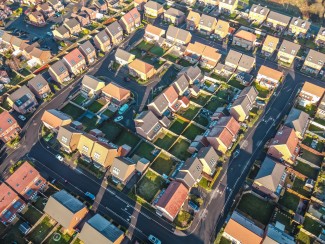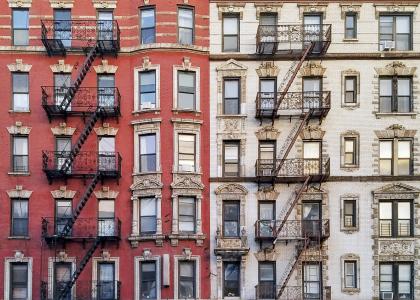Energy-saving upgrades for homeowners have significant benefits for households and the climate, but lower-income homeowners are often overlooked by cities’ energy efficiency programs and policies. A new ACEEE guidebook identifies promising strategies from leading cities to help make owner-occupied housing more energy efficient, especially for low-income homeowners and homeowners of color.
Cities often prioritize larger buildings, but scaling energy efficiency in owner-occupied homes is also critical. Efficiency upgrades help improve residents’ health and financial well-being and reduce planet-warming emissions. Because the burdens of climate change, high energy costs, and housing insecurity are often concentrated in low-income communities and communities of color, a growing number of cities want to better serve these communities to correct the disparities. The following two strategies, among many more in the guidebook, can serve as models to guide their work.
Milwaukee’s loan program increases access to financing
Homeowners who lack resources often struggle to access energy efficiency improvements due to upfront costs. To maximize access for low-income households, local governments would ideally provide grants, rebates, and similar incentives for energy efficiency improvements. When cities aren’t able to offer incentives directly, they can support these homeowners by increasing financing options for energy efficiency projects. Milwaukee offers the Milwaukee Energy Efficiency Program (Me2), a low-interest loan program for upgrades such as insulation, air sealing, and installation of hot-water furnaces and air conditioners. The program does not require applicants to submit a down payment, have home equity, or meet a minimum credit score, all of which can exclude households and communities that have experienced disinvestment. Homeowners who received a home inspection, insulation, and air sealing through the Me2 program reported an average 30% reduction in energy use, according to Milwaukee’s Environmental Collaboration office.
Financing programs like Me2 can help deploy energy efficiency to low-income homeowners, who often lack the resources and capital needed to finance energy retrofits. Cities can work with entities like credit unions, banks, and community-based organizations to identify financing mechanisms that best meet the needs of homeowners in their area.
Philadelphia’s Neighborhood Energy Centers provide one-stop shops for energy information
Cities can establish local hubs to share information about energy efficiency programs and related services that help reduce residents’ expenses and make their homes healthier. For example, in Philadelphia, a network of 16 neighborhood energy centers (NECs) provides residents bill assistance, budget counseling, weatherization assistance, and energy education. The NECs are run by the Energy Coordinating Agency, a local nonprofit, and each center is managed by a trained energy counselor. To date, the NECs have served more than 20,000 residents (about 5,000 households). Philadelphia’s NECs play a crucial role in ensuring that all residents have easier access to energy efficiency, home repair services, and financing options and can learn about energy conservation. Other cities can follow this example by independently establishing hubs, hiring community-based organizations, or partnering with other organizations to provide information and resources for households in a central place or website.
Learning from other cities can help local governments identify best practices
Today’s guidebook is part of the Energy Equity for Homeowners initiative, which ACEEE launched in 2022 to provide local governments resources and examples to help their efforts to equitably deploy energy efficiency to owner-occupied homes. The guide draws from eight months of engagement with 15 large U.S. cities about their goals, plans, and obstacles. By learning from each other’s approaches, cities can better reduce climate pollution and help all households benefit from healthier homes and lower utility bills.




